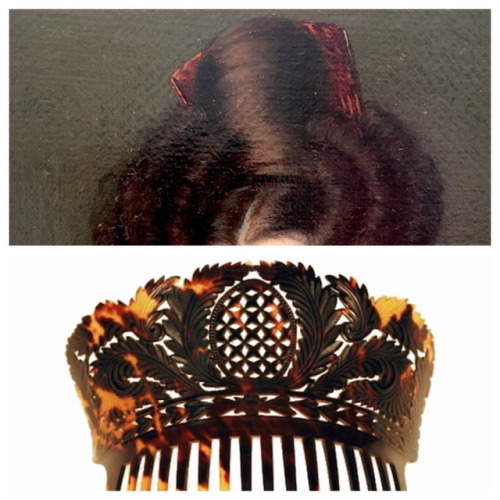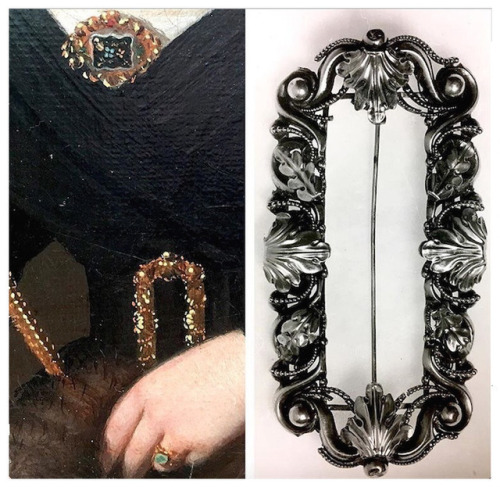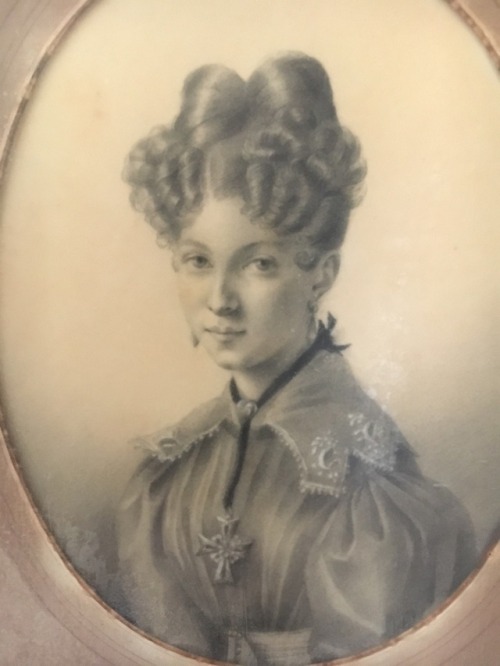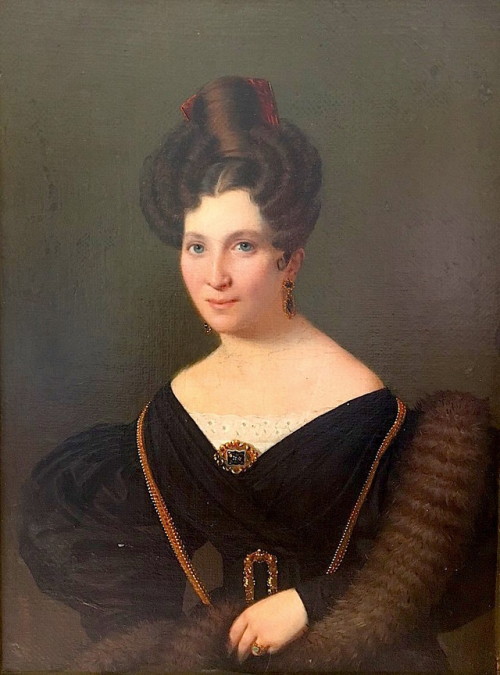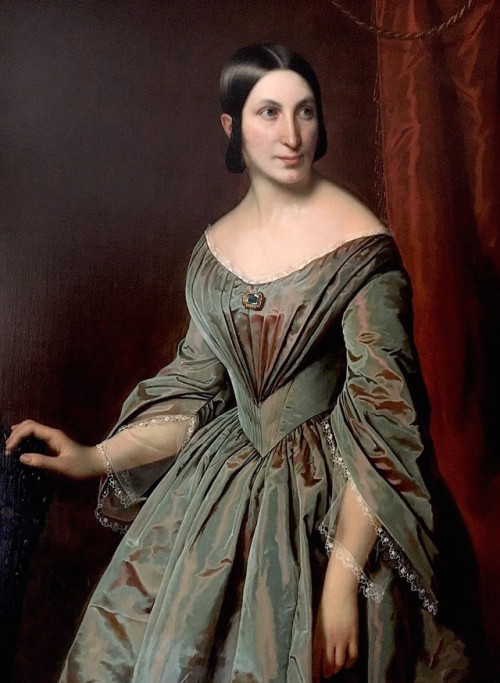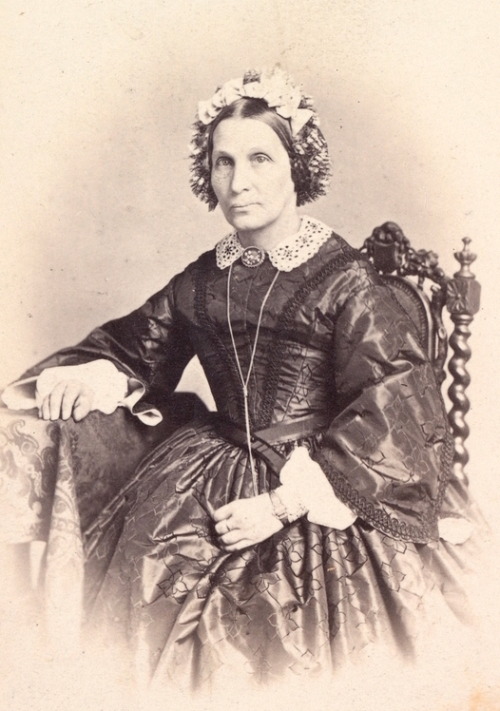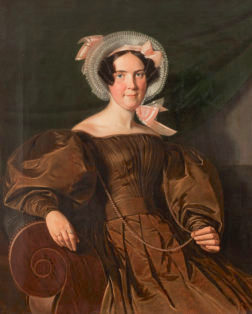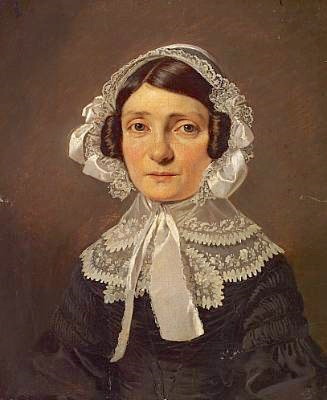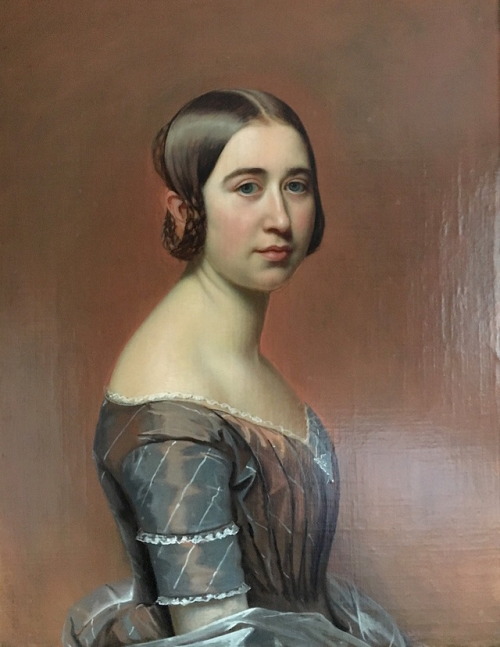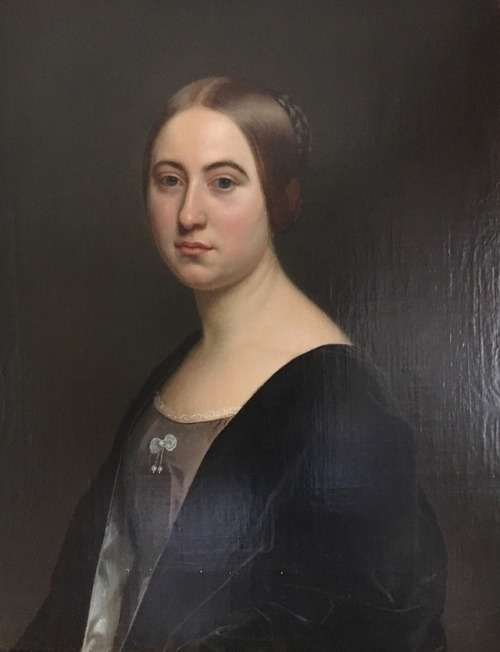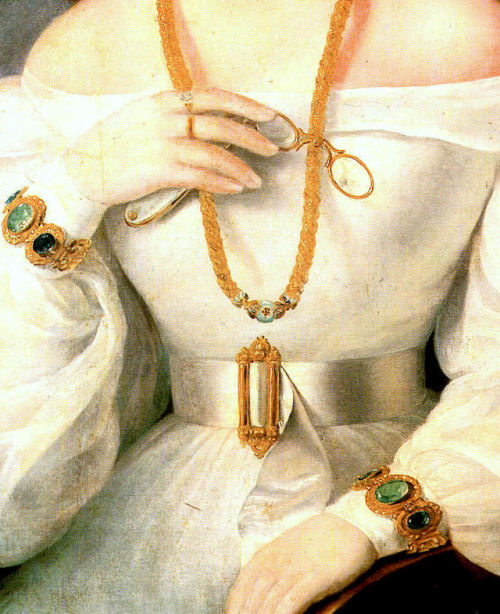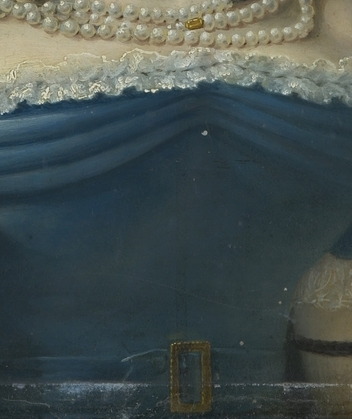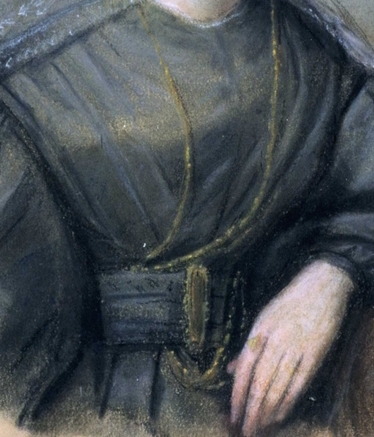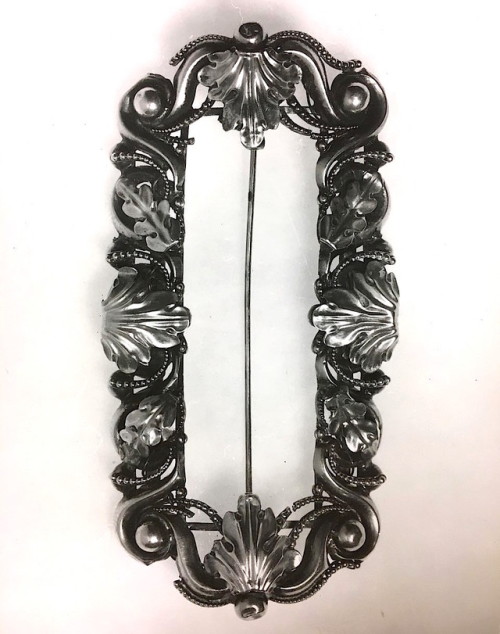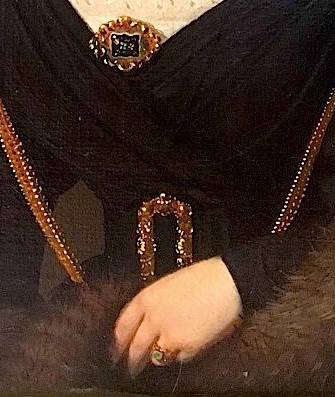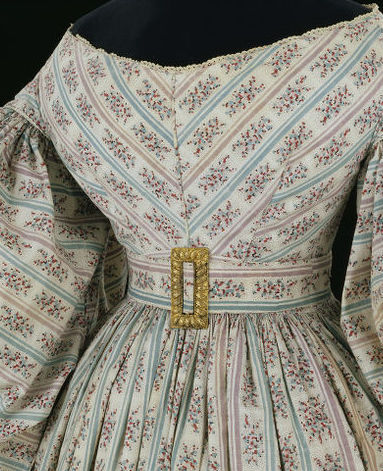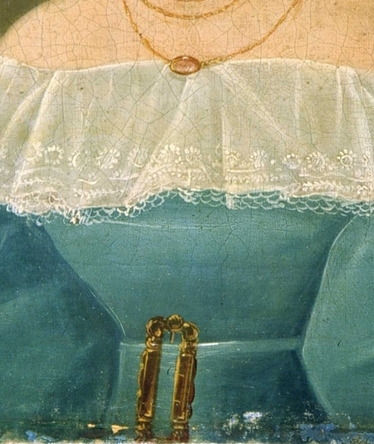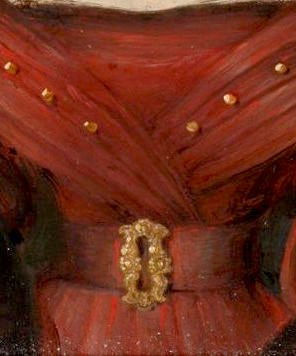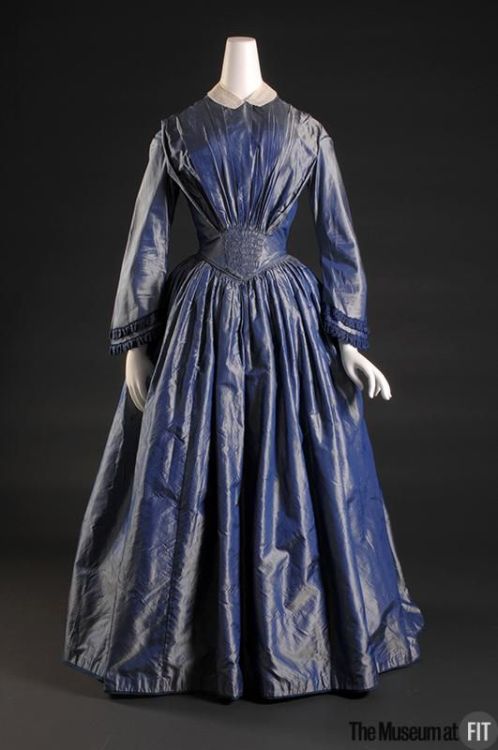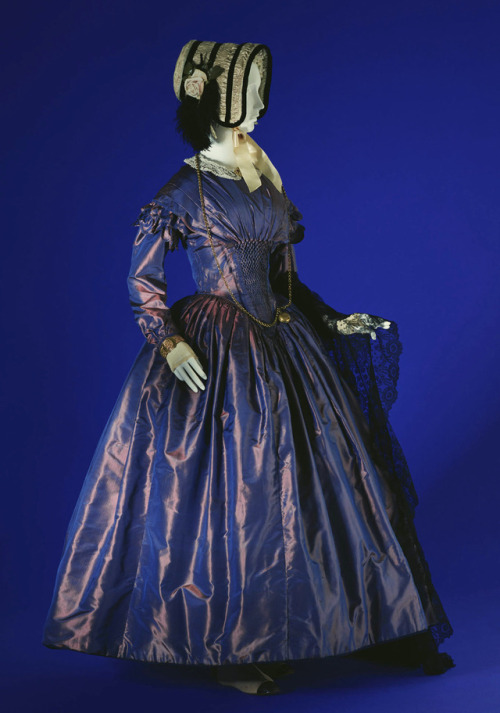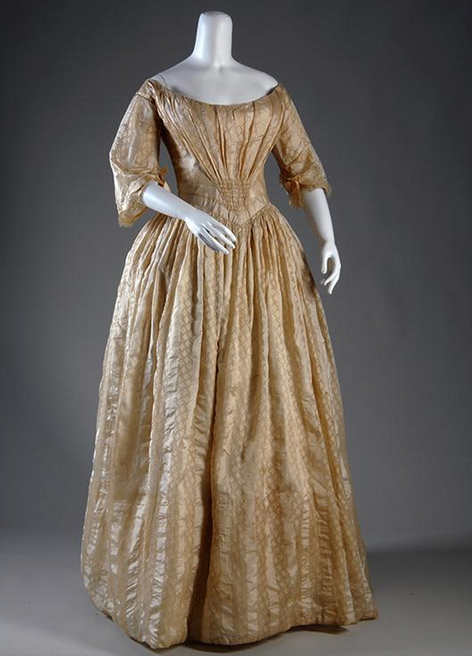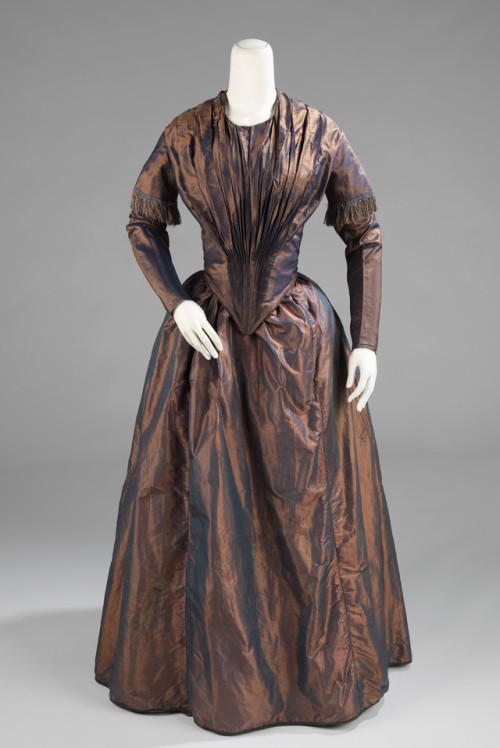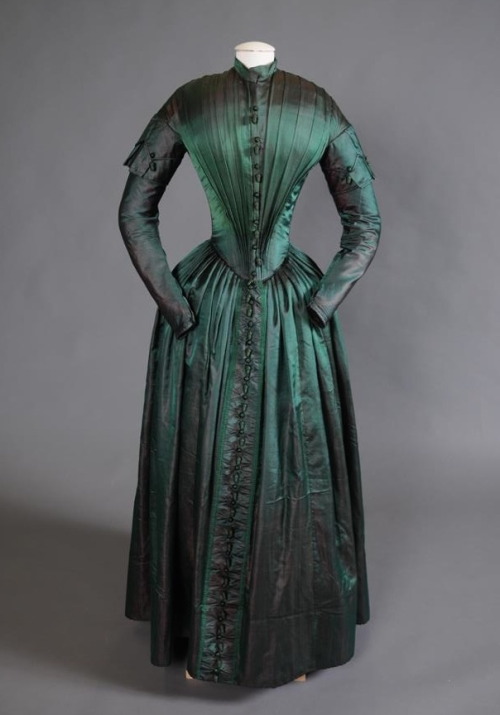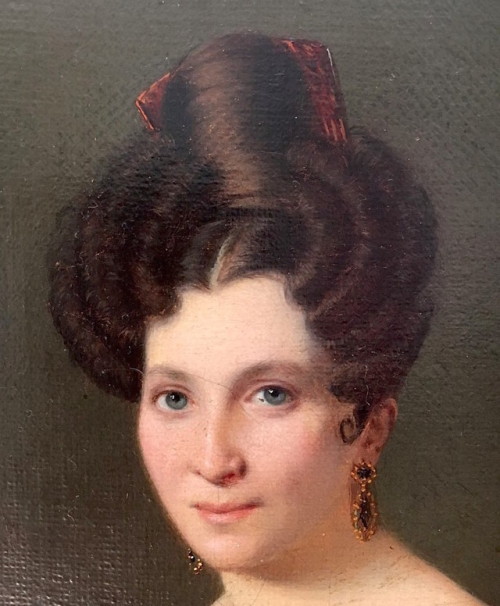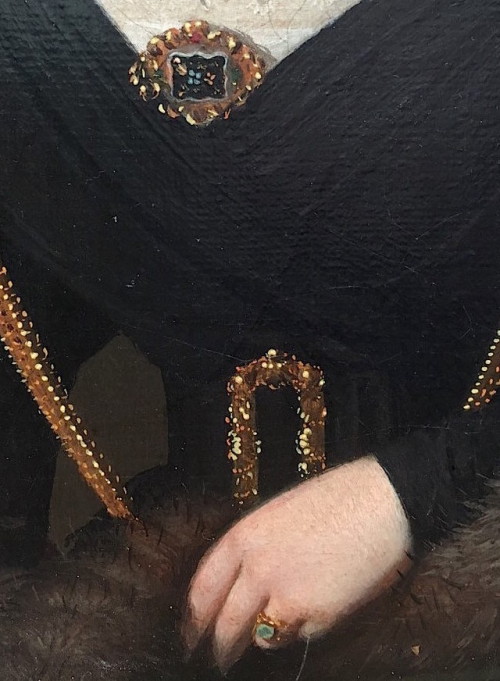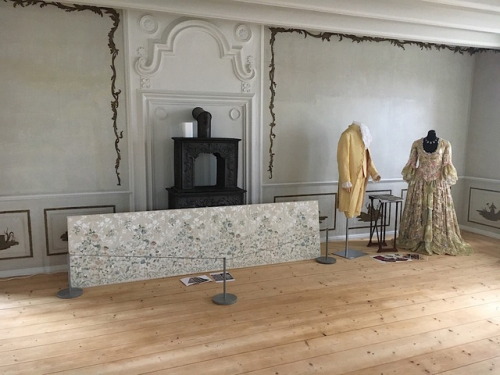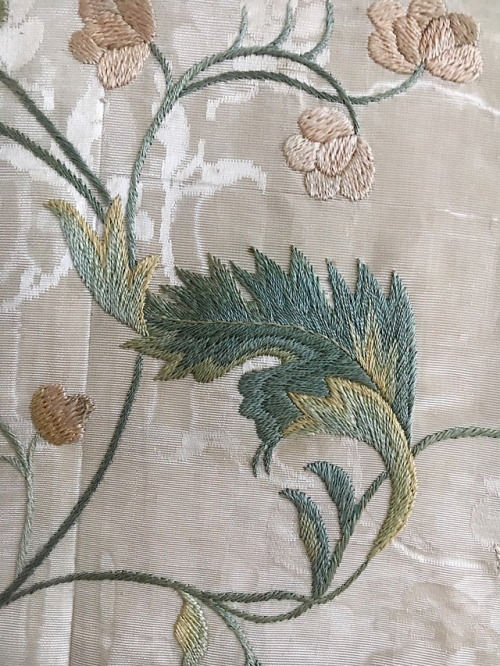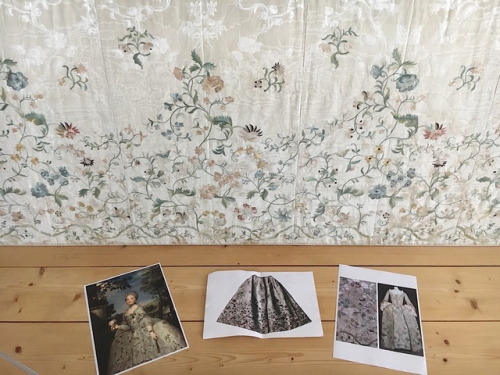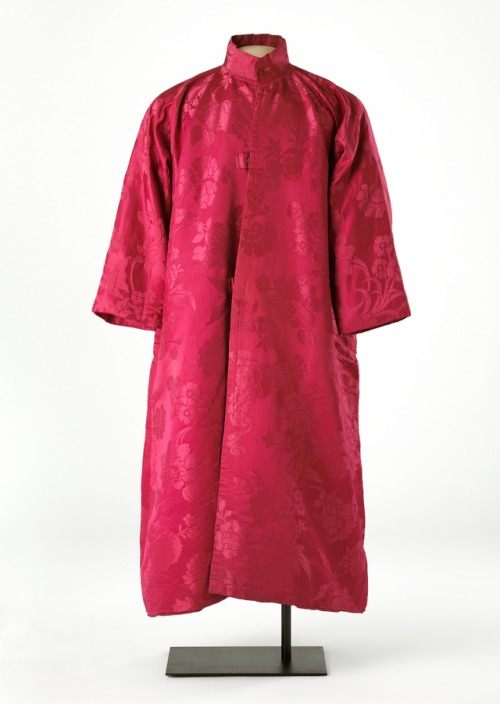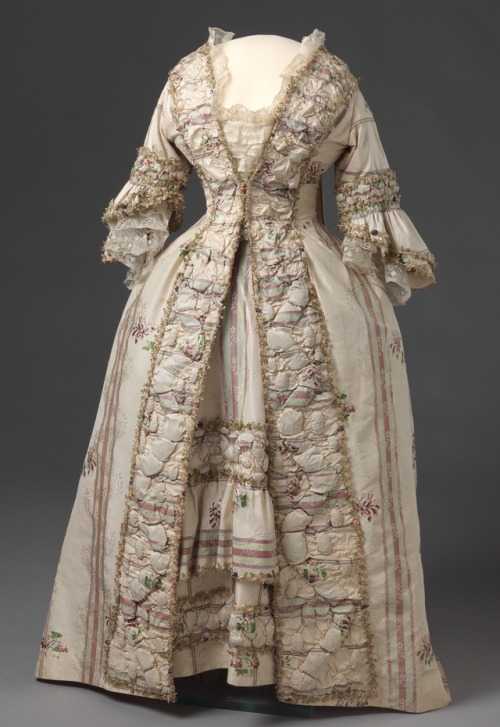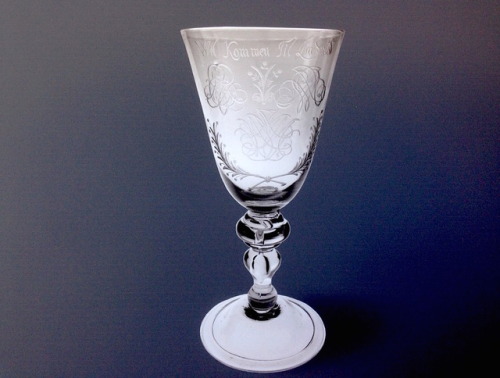#linderud gård
Juliane Elise Larpent, née Mathiesen, painted by Louis Aumont in 1827.
The portrait of Juliane Elise by top portraitist Aumont was possibly painted when she became of age to marry, or as newly engaged - the way she displays the ring on her left hand makes it a plausible marriage motif. It’s painted two years before she married Isaac Larpent.
The portrait shows her in a black dress with narrow waist, scissor draped bodice front, gigot sleeves and with prominent gold jewellery. The belt buckle is particularly interesting, as it survived until recent years as a family heirloom.
The black dress has a striking similarity to a greyish blue dinner dress dated to ca. 1830, and sold through Cora Ginsburg in New York in 2017. The scissor draped front, narrow waist and gigot sleeves corresponds well, and it even has a corresponding belt buckle.
Post link
Juliane Elise Larpent (1807-90), documented in portraits
- 1823:Painted around age 16, by Mme. Isabeau. The way she wears her green scarf is fabulously modern! A lock of her hair is said to be inside the frame, along with a note from her son Sophus Larpent.
- 1824-26:Drawn around age 18, unknown artist. There is a similar portrait of her younger sister Louise made around the same time, wearing the same type of dress and collar, and an identical necklace.
- 1827:Painted around age 20, by Aument. This is at the height of Regency fashion, with a large hair comb, and a big metal buckle in the waist. The buckle is still within the family today. She’s showing off a ring at the left hand, it might have been a portrait painted when she got engaged to Isaac Larpent. The couple married in 1830.
- 1850s:Painted around age 40, by David Monies. She looks so different from her younger portraits; at least the nose seems more exaggerated. However, the dress is absolutely splendid, featuring green silk shot with red, and a lovely fan fold decorated bodice with pagoda sleeves.
- 1870s:Here she is around 70 years, documented by photographer Wilhelm Cappelen. By now she would have had some 15 grandchildren, 11 of whom she took care of. The plot twist is that two of her daughters were married to the same man - albeit not at the same time - and had 11 children in total. So her son-in-law became a widower for the second time she moved in with him to take care of all the grandchildren. She was a majestic figure, only known as “Grandma Larpent”.
- 1870s:A photo where she wears either the same dress slightly remodeled, or a dress made of the same fabric. It might also have been a “transformation dress”; one skirt with two bodices. Whatever the case, the bodice and sleeves are different, and she wears another belt and collar, but the fabric is the same in both photos. She was probably in her mid 70s here. She lived until the age of 83.
Post link
1830s + 1840s + 1850s female portraits by David Monies (1812-94)
- “Portrait of a married woman”, 1834 (from an auction site)
- “Sophie Marie Bang, née Dahlerup”, 1831-35 (Ribe kunstmuseum)
- “Mrs. Eckegreen”, 1830s (from an auction site)
- “Caroline Jensine Christensen”, 1840s (from an auction site)
- “Karen Wetlesen, née Mathiesen”, 1846 (Linderud gård)
- “Helene Hals, née Mathiesen”, 1846 (Linderud gård)
- “Cecilie Birgithe Mathiesen, née Boldt”, ca. 1850 (Linderud gård)
- “Agnes Hedevig Mathiesen, née Ruwald”, ca. 1850 (Linderud gård)
- “Juliane Elise Larpent, née Mathiesen”, ca. 1850 (Linderud gård)
Post link
One of the most typical Romantic era fashion details I know of is the big, quadratic belt buckle women wore to emphasis their waist.
After some decades of a raised waistline and column-like silhouette, narrow waists once again came into fashion, helped by a new hourglass shaped corset that further underlined the shape. And the big buckle was the the finishing detail, the exclamation point. Here’s some examples.
- “Portrait of a Woman”, 1831, by Miklós Barabas (unknown location)
- “Portrait of Eleonore Thulstrup”, early 19th century, by Jacob Munch (Oslo Museum, OB.00484)
- “Portrait of Christine Kemp Keilhau”, 1835, by Johan Görbitz (Oslo Museum, OB.00258)
- Ribbon belt and golden buckle on a pigeon blue dress, 1830s (from Cora Ginsburg auctions)
- Golden buckle, 1827 (private collection)
- “Portrait of Juliane Elise Larpent”, 1827, by Aument (Linderud gård, Oslo). Here she is wearing the very buckle seen in photo 5.
- Golden buckle and belt made of the same fabric as the dress, 1830-34 (Victoria and Albert Museum, London, T.168&A-1915)
- “Portrait of Henriette Hansen”, 1831, by Richter W. (Oslo Museum, OB.00049)
- “Portrait of Paula Schedius”, 1834, by Carl Rahl (unknown location)
Post link
1840s silk dresses, with focus on fan pleated bodices and shot silk
- Blue/golden shot silk day dress, ca. 1849, probably USA. From The Museum at FIT (P86.37.1)
- Blue/purple shot silk day dress, ca. 1845, England. From The Kyoto Costume Institute (AC4474.83-11-10)
- Golden/beige evening dress, ca. 1845, USA. From The Museum at FIT (P88.25.3)
- Portrait of Cecilie Birgitte Mathiesen, née Boldt, 1845-50. Painted by David Monies. From Linderud Manor, Oslo.
- Portrait of Agnes Hedevig Mathiesen, née Ruwald, 1845-50. Painted by Friedlander. From Linderud Manor, Oslo.
- Portrait of Juliane Elise Larpent, née Mathiesen, 1845-50. Painted by David Monies. From Linderud Manor, Oslo.
- Rust/blue shot silk afternoon dress, ca. 1845, USA. From The Metropolitan Museum of Art (2009.300.933)
- Green/brown day dress, 1840s. From The Shippensburg University Fashion Archives and Museum (SUFAM).
- Green day dress, 1840s. From The Tasha Tudor Collection, at the 2012 Whitaker Auction.
Post link
Juliane Elise Larpent (née Mathisen), painted by Aument in 1827
She was born in Copenhagen in 1807, and died in Oslo in 1890. Multiple portraits and photographs exists of her, but this is by far my favourite. Her hairdo and overall appearance is smashing - but even more exciting: the golden buckle she wears in the portrait has survived and is still within the family.
Post link
Yesterday I did a special guided tour on a remarkable woman from the 18th century - Helene Cathrine Büchler (1740-1831).
Though no portrait is known of her, tons of surviving items exists, both at the manor she lived, and in museums. The biggest surprise and coolest thing is that the fabric from her wedding skirt is still at the manor. I was allowed to pull it out for the guided tour yesterday, and it’s the most beautiful thing - a floral ivory damask embroidered with ornate flowers and leafs on the hem.
Some weeks ago I found an archive photo of it from the 1960s, and I was devastated to see the skirt was fully intact, perfectly preserved - and then someone decided to remove pleats and back seam and attach it to a wooden frame. That’s how it is today.
A big chunk on fabric is missing on top, and until yesterday I’ve been in doubt of whether they actually cut off the top or just folded it in. But I did a small examination before the tour, and there is a distinct “lump” telling me they just folded it in. Which in short means this 1762 wedding skirt can be restored to its former glory, and that’s the coolest thing ever!
Here’s some sneak peeks of how the skirt is today, on its wooden frame, along with some closeups of the gorgeous silk embroidery.
Post link
Linderud Manor in the outskirts of Oslo
The manor was owned by the same family for some 300 years, and has both an amazing history and amazing items - especially from the 18th century when the prominent couple Mogens Larsen Monsen and Helene Cathrine Büchler inhabited the place. Here’s some favourites!
- Tea set for two, from Royal Copenhagen ca. 1788. A gift to the Monsen couple from the Danish-Norwegian crown prince Frederik.
- Banyan made of Spitalfields silk, 1750-60. Worn by Mogens Larsen Monsen (today in The National Museum).
- Miniature portrait of Mogens Larsen Monsen, ca. 1780.
- Robe a la Francaise, 1770s. Comes from Linderud, was probably worn by Helene Cathrine Büchler (today in The National Museum).
- The reconstructed Baroque hall, 1713-20, at Lindreud.
- The wedding present from husband to wife: a wooden box with two complete jewellery sets (parure), fan, toothpick, a mirror plus silver boxes for hairpins, pomades etc (today in The National Museum).
- Closeup of one of the jewellery sets, 1762
- Salute cannons, 1790s
- A huge class cup with engraving “Welcome to Linderud”, used for toasting ceremonies. Made by Nøstetangen in the 1760s.
Post link


